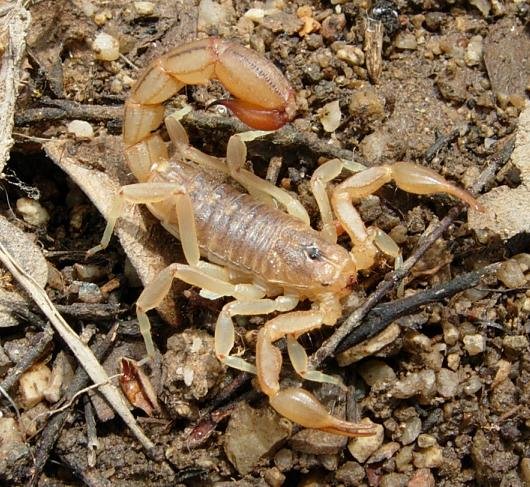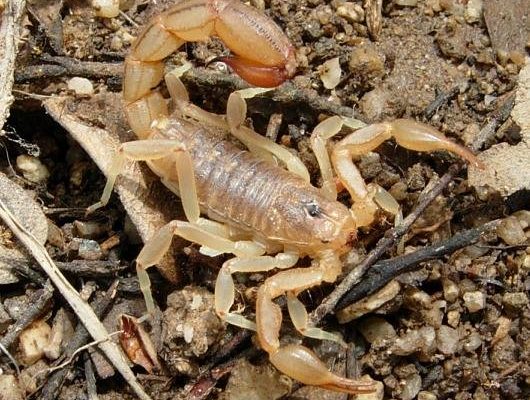
When you think of insects, you might picture things like butterflies, ladybugs, or ants. They usually have three body segments and six legs, making them easy to spot in the insect crowd. Scorpions, on the other hand, have eight legs and a more compact body structure, which leads us to the big question: Are scorpions insects or arachnids? Spoiler alert—they’re actually arachnids, but understanding this classification opens up a whole world of interesting facts about these unique creatures.
Understanding the Classification of Scorpions
Scorpions are part of the class Arachnida, which includes other familiar spiders and ticks. This classification is based on several key features that all arachnids share. For starters, they have eight legs, unlike insects, which only have six. Arachnids also have two main body segments: the cephalothorax (that’s a mouthful, right?) and the abdomen.
Another characteristic that sets arachnids apart is their lack of antennae. While insects have a pair of these sensory organs, scorpions and other arachnids communicate and sense their environment differently. They use specialized hairs and other sensory organs to detect vibrations, scents, and temperature changes.
So, you might be wondering: why does it matter? Well, understanding their classification helps us learn how scorpions fit into the ecosystem and their role as predators. They have unique adaptations that make them fascinating creatures to study.
The Anatomy of Scorpions vs. Insects
Let’s break down the physical differences between scorpions and insects. While both groups of animals play vital roles in their environments, their anatomy reveals just how distinct they are.
- Leg Count: Scorpions have eight legs, while insects only have six. If you ever find a scorpion, counting its legs is an easy way to tell what it is!
- Body Segments: Scorpions boast two main body segments—the cephalothorax and abdomen. Insects, however, typically have three segments: head, thorax, and abdomen.
- Antennae: Insects use their antennae to gather information about their surroundings, but scorpions do not have these sensory organs.
These physical differences aren’t just technicalities; they play a big role in how each group survives in the wild. For example, scorpions often rely on their strong pincers and venomous stings to catch prey, while insects may use wings or other methods to escape danger.
The Habitat and Behavior of Scorpions
Scorpions are mainly nocturnal creatures, meaning they come alive at night when they hunt for food. You’ll often find them hiding under rocks, logs, or in burrows during the day. Their ability to thrive in harsh environments, like deserts, sets them apart from many insects, which often prefer more temperate climates.
Here’s a fun fact: scorpions can survive without food for up to a year! They conserve energy by slowing down their metabolism. This adaptability is crucial in their habitats, where resources can be scarce.
The way scorpions hunt is also pretty intriguing. They use their pincers to grab prey and can deliver a venomous sting, which helps subdue or kill their food. This hunting strategy is different from many insects, which may use a variety of methods, like flying or camouflage.
Life Cycle of Scorpions
Scorpions have a unique life cycle that further distinguishes them from insects. Unlike many insects that lay hundreds of eggs at once, scorpions give birth to live young. That’s right—most species nurture their young in a way that’s more similar to mammals, making them quite special in the arthropod world.
When scorpion babies are born, they climb onto their mother’s back for protection and travel with her for a while. This maternal care is rare in the insect world and highlights how scorpions are more closely related to spiders and similar creatures.
As they grow, scorpions go through a series of molts, shedding their exoskeleton to make way for larger bodies. Each molt can be a vulnerable time for scorpions, making them susceptible to predators.
Scorpions in Human Society
Now that we’ve dug into what scorpions are, let’s talk about how they fit into our lives. Scorpions evoke a mix of fear and fascination, often appearing in movies or books as symbols of danger. In reality, most scorpions are not dangerous to humans. Of the more than 1,500 species, only about 30 to 40 have venom potent enough to pose a risk to our health.
In some cultures, scorpions are considered delicacies or are used in traditional medicine. For example, people in certain areas consume roasted scorpions as a snack. Similarly, their venom is being researched for potential medical uses, including pain relief and treating certain cancers.
So, here’s the thing: while we might be wary of scorpions, they play a crucial role in maintaining the balance of ecosystems and deserve our respect.
Final Thoughts on Scorpions and Their Classification
In conclusion, scorpions are not insects; they’re arachnids. Understanding this classification helps us appreciate their unique characteristics, life cycle, and role in the ecosystem. As we’ve explored, scorpions have fascinating traits that set them apart from the insect world.
So, the next time you spot a scorpion, take a moment to acknowledge this incredible arachnid. Understanding these differences is not just about categorizing animals; it’s about appreciating the diversity of life on our planet. Whether they inspire fear or curiosity, scorpions are one of nature’s many wonders. Keep exploring, and you’ll find that there’s always more to learn about the fascinating creatures that share our world!

